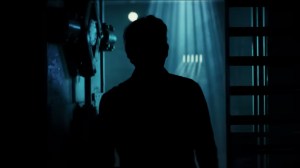Few modern directors have had as bizarre of a career as Gore Verbinski. That’s not to say he’s had a bad career, in fact, far from it. His first feature was the family friendly adventure comedy Mouse Hunt, followed by the romantic comedy The Mexican, which starred Brad Pitt and Julia Roberts at high points in their careers, which led to the J-horror remake The Ring, leading to the massive Pirates of the Caribbean trilogy. Verbinski followed that with the underrated animated film Rango, into the financially disappointing The Lone Ranger, and now his new film, A Cure For Wellness.
Videos by ComicBook.com
Verbinski clearly has a ton of creative interests and can’t be pinpointed by one filmmaking style, or even one genre, and that abundance of concepts is shown in spades in A Cure For Wellness, his almost two and a half-hour psychological thriller, which gives plenty of great scares, but is weighed down by an exhausting combination of too many ideas.
Hoping to move up in a vaguely defined but clearly money hungry corporation, Lockhart (Dane DeHaan) finds himself in a tough position. Having taken some less-than-legal routes to get to where he is, his bosses have the ammunition to blame their impending downfall on him, and cut their ties to the ambitious company man. Instead, they show Lockhart a letter from a fellow board member who went to a resort in Switzerland. In exchange for keeping their silence about Lockhart’s nefarious deeds, they request the board member be retrieved in hopes of pulling off a huge merger – an arrangement Lockhart accepts.
Upon arriving at the facility, Lockhart notices all of the patients are elderly, which doesn’t stop him from barging in and demanding to see his associate. When he’s told he must wait until later that evening, Lockhart hops in a car headed to town, but unfortunately gets into an accident that breaks his leg, making him the resort’s newest patient. Volmer (Jason Isaacs), the man in charge of the facility, reminds Lockhart that he must drink water if he hopes to heal, but considering the stories he’s heard about the resort being built on the grounds where a crazy Baron was murdered for attempting science experiments on his sister (whom he intended to marry), Lockhart doesn’t trust anyone or anything, as the film goes on to explore what truly goes on at this facility, and why so many patients claim that no one ever leaves.

Within the first thirty minutes of the film, Verbinski’s visuals remind you of how effective his work was in The Ring. You’ll see familiar uses of elements of that film, like his use of water, mirrors, and deer. Few directors can compose shots like Verbinski, and he used a creepy old castle and plenty of symmetry to give you the ultimate dread-inducing hospital. Going forward, it will be the resort from this film that sets the bar on what we think of when we imagine sanitariums, and that’s a huge accomplishment. His sound design is also incredibly effective, whether he overwhelm you with the sound of a dentist’s drill, recreates the dull sounds you hear when your ears are below water, or the relative silence of bare feet on tile. Sadly, that’s about as far as the similarities go when thinking of his other horror film, and ultimately, A Cure For Wellness is more similar to the bloated action-adventure films he’s made that simply refuse to end.
It was hard to know what to expect when going into the film, as the trailers and marketing materials never really decided on what type of film they were marketing. The paranoid delusions of a man in an institution were reminiscent of psychological thrillers like Shutter Island, but some elements of the promotional materials gave the impression we’d be seeing a David Cronenberg-inspired body horror, or even his son Brandon’s film Antiviral. Both of those genres are present in the film, as well as mad scientist elements, cult elements, and gothic romance elements. That’s at least six different genres that are expressed, with none of them complimenting one another that well. It’s almost as if, in the 15 years since Verbinski made The Ring, he’s saved up every horror idea he’s had a tried to work it into Cure For Wellness, instead of being more selective about what tones played well off one another.
Even though the film is overlong and gives the viewer too many conflicting tones, there are still some incredibly effective sequences, no matter what type of horror film freaks you out. One scene involving a dentist drill, for example, had the entire theater squirming, while a scene with Lockhart in a massive sensory deprivation tank resulted in mostly laughter from the audience being so uncomfortable with what they were witnessing.

As you can imagine, Isaacs flexes his villain muscles quite well, giving an authentically creepy doctor whose intimidation heightens naturally throughout the film. Mia Goth is also quite good in the film, playing a younger girl who is forced to stay at the resort under doctor’s orders, without ever really being told what the orders are. DeHaan has a difficult job of playing a character that isn’t likable, so you never sympathize with him. He’s tolerable as a character that the audience experiences the story through, but he does little more than that.
Ultimately, the film feels very similar to Roman Polanski’s The Ninth Gate, a psychological thriller with the potential of supernatural elements and has its effective sequences, but makes you pine for the director’s previous work that was much more linear-minded and efficient. It’s a rare movie where, rather than wishing for a director’s cut that reveals unused scenes, you wish there was a cut that trimmed some of the film’s fat to have created a more taut thriller. Seeing these set pieces and cinematography makes a rewarding theatrical experience, so long as you are preprared for mental and physical discomfort.
A Cure for Wellness will be in theaters Friday, February 17. It is 2 hours and 27 minutes long, and is rated R for disturbing violent content and images, sexual content including an assault, graphic nudity, and language.





